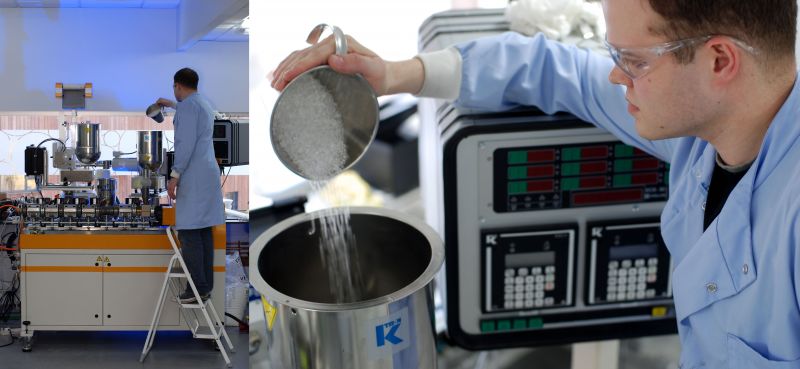Advanced Polymer Processing
Polymer nanocomposites and smart materials are the future
From Syntheses to Applications
Nanoforce’s activities involve in the area of nanostructured polymers and composites manufacturing, characterisation and modelling from lab-scale to industrial scale for Aerospace, Automotive, Electronic, Packaging, Marine and Green building applications.
Advanced composite laboratory at Nanoforce has a wide range of state-of-the art polymer processing facilities that include extrusion, compounding, injection moulding, blow moulding, electrospinning, 3D weaving, filament winding and coating.
Nanoforce collaborate with the School of Engineering of Materials Science at Queen Mary University of London also both large global companies and SMEs across a variety of sectors.
Nanoforce has been involved in a large number of advanced material development activities.
Polymer nanocomposites is a high impact field in composites, allowing unique properties to be achieved often at very low filler loading. These include electrical and thermal conductivity and gas barrier properties using nanofillers such as carbon nanotubes (CTN), graphene, exfoliated graphite and nanoclays.
Highly oriented fibres and tapes. Polyethylene is used in commodity application such as milk bottles and grocery bags. However, when suitably stretched (oriented) the same polymer can be used as a ballistic fibre to stop bullets. We have a wealth of experience in orienting many kinds of synthetic and biopolymers.
Functional packaging to pack goods from food to electronics offers a significant technical challenge. Shielding, gas penetration, gas scavenging and recyclability are a few requirements of packaging. We have a pilot size three layer film blowing line, allowing the trialling of films with a functional gradient. For example, one layer could be a water barrier while another could be an oxygen scavenger.
Electrospinning for the generation of a non-woven fibre mat from polymer solutions. The fibres have very small dimensions, typically into the nanometre range. This allows the exploitation of the unique surface properties of polymers. These fibre mats can be used for filtration of very fine particulates and can include other additives such as silver for antimicrobial action.
Our recent collaborative projects are focused on:
- Creation of high performance fibres for advanced composites
- Development of eco-composites using renewable materials
- Development of fully recyclable polymer composites
- Polymer films for sensor applications
- Flame retardant polymer nanocomposites for automotive applications
- Utilisation of nanoscale architecture in polymers and composites
- Development of multi-reactive smart textiles
- Flexible pyroelectric materials for energy harvesting and device applications
- Micromechanical modelling
Applications of Polymer Nanocomposites produced at Nanoforce:
- Nanofilled polymer coatings for use in aeronautics, the automotive industry, electronics, medical equipment and consumer goods
- Biomaterials and multifunctional scaffolds for tissue engineering
- Advanced materials for soft body armour applications
- Nanofilled composites for Aerospace applications
- Conductive fibres, tapes and transparent thin film for EMI shielding
- Polymer nanocomposite fuel cells with improved thermomechanical degradation properties
- Flame-retardant polymer nanocomposites
- Biodegradable polymer nanocomposites
- Filtration devices


